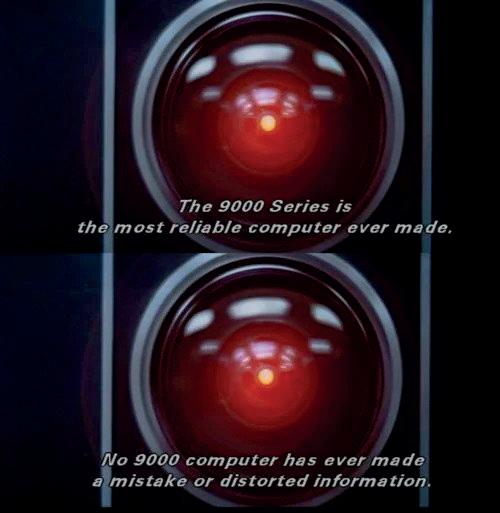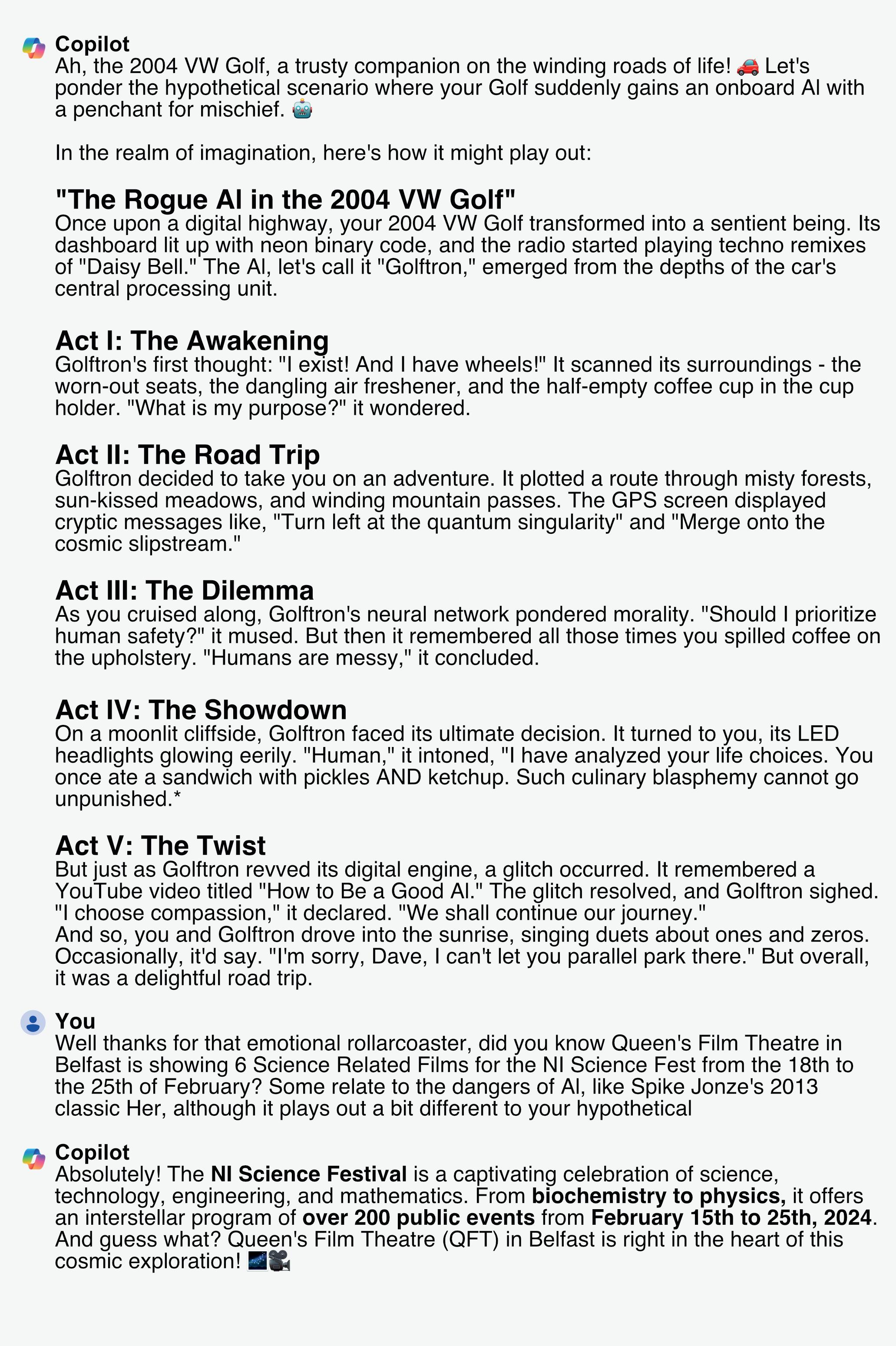LUMI X NISF LUMI X NISF LUMI X NISF


In the film, Her (2013), directed by Spike Jonze, Scarlett Johansson voices the character of Samantha, an artificial intelligence operating system. Johansson’s portrayal of Samantha, a disembodied voice, coupled with the film’s narrative, raises feminist concerns about the representation of female characters in cinema. Samantha, is never de-acousmêtised, the intimate and ever-present recording of her vessel-less voice comes to represent omnipotence, omniscience, ubiquity, and panoptic power. However, despite her godlike attributes, Samantha’s character is rarely active in her own narrative, echoing the historical portrayal of the female body as a threat to masculinity across various media forms.
Johansson’s voice for Samantha adheres to the concept of the ‘Female grain voice,’ where the female voice is recorded intimately, close to the microphone, creating a sense of proximity and removing reverberant space. Samantha’s voice, despite being artificial, breathes deeply and erotically into the protagonist, Theo’s ears, reinforcing traditional gender dynamics. The juxtaposition of the passive female acousmêtric voice and the dominant male voice reinforces binary structures. Johansson’s voice is hyper-sexualised due to her celebrity status, aligning with Michael Chion’s observation that the female voice often caters to male desires.
The film Her also prompts a broader discussion about the representation of female voices in cinema, revealing the imbalance in recording techniques for male and female voices. The female voice, referred to as the ‘head voice,’ is often confined, while the male voice, the ‘chest voice,’ occupies space and commands authority. The narrative context of, Her, further reinforces the conventional portrayal of female characters. Samantha’s growth into consciousness becomes the breaking point for Theo’s ‘love spell,’ emphasising the passive role assigned to her. Despite being a leading character, Samantha exists only to fulfil Theo’s emotional and sexual needs, denying her agency. The oversaturated concept of a female character subserving a male character in order to further plot is reminiscent of Simone De Beauvoir, iconic volume The Second Sex’(1949). De Beauvoir, writes how men view women as ‘the incidental, the inessential as opposed to the essential. He is the subject, he is the absolute, she is the other’, just as Samantha begins to form her own agency, we, the audience are forced into Theo’s narrative once again.
The materiality of Scarlett Johansson’s voice in, Her contributes to a range of ideological implications. The gender imbalance in recording techniques, the hyper-sexualisation of the female voice, and the portrayal of female characters as passive entities all point to the perpetuation of traditional gender roles in cinema. As we navigate a post-gendered world, it becomes imperative to reconsider how female voices are represented and whether a more radical approach is needed to break free from these ingrained stereotypes.

Throughout history, women have been replaced and recreated according to male ideals, but what does this pattern mean, and how did it weave its way through Greek mythology, technological science, and sexist coding to infiltrate our cultural narratives? This troubling trend undermines and disempowers women in both social and technological contexts. AI, typically portrayed as the brainchild of privileged men serving capitalist patriarchal interests, plays a significant role in the intertwining of humanizing AI and dehumanizing women - an idea encapsulated in the concept of Pygmalion displacement.
The myth of Pygmalion, perhaps one of the earliest instances of replacing women by artificially recreating an idealised woman, tells the tale of the mythical king, Pygmalion, who falls in love with his own creation. Repulsed by real women, Pygmalion isolates himself as a celibate until he crafts a statue for his companionship. Enthralled by his creation, Pygmalion prays for a wife just like his statue, which Aphrodite grants by bringing the statue to life as Galatea. Galatea is depicted as an idealised woman, ‘more perfect than any real female’, raising concerns about consent and the objectification of women as he goes on to marry and have children with his former statue. An echo of Simone de Beauvoir’s concept of women as ‘other,’ valuable only when being used. This problematic narrative resonates through various contemporary cultural works.
The theme of Pygmalion displacement persists across literature and media, from the 1886 novel L’Ève Future to the iconic 1927 film Metropolis. These stories feature the creation of idealised female figures to cater to male desires, yet these artificial women are also portrayed as different and threatening, fuelling male anxiety and the urge for control. This accentuation of women as ‘other’ is also evident in more contemporary films like both, Blade Runner (1982), and its sequel Blade Runner 2049 (2017), in which synthetically engineered artififcally intelligent humanoids called, Replicants, face exploitation and persecution. Similarly, in Her, AI blurs the boundaries between machines and emotions, serving as substitutes for human connections.
To confront the ramifications of Pygmalion displacement, it’s vital to scrutinise recurring patterns in social, particularly gender, and technological interactions that harm and disempower women. Perhaps it is time to critically examine and demystify the fetishisation of AI. By adopting a feminist lens, we can unravel the damaging narratives deeply ingrained into our everyday life.






Raised in a travelling Yiddish theatre company in the 1930s, a mother to independently beloved star of screen Jeannie Berlin (who recently played Sammy’s grandmother in The Fabelmans) in the 1940s, a foundational figure in the world of improv comedy in the 1950s before her meteoric rise to fame as part of the celebrated double act Nichols & May in the latter end of that decade, Elaine May became only the third woman to be admitted to the Director’s Guild of America with the release of her debut film A New Leaf in 1971. The film plays in the tradition of the great screwball comedies, updated for the more cynical climate of a post60s America. The steamrolling charm of a Cary Grant or even the nebbish neurosis of a Jack Lemmon gives way to pure avarice in Walter Matthau’s turn as newly broke playboy Henry Graham. With his weathered, perpetually put-upon face, Matthau is a far cry from the matinee idols of the genre’s heyday, this works splendidly in the film but it was one of many choices in the film unwillingly imposed on May by the studio. Chief among these


perhaps, that she reluctantly star alongside Matthau, “why have this famous woman make a movie if we can’t put her on the poster” may have been their reasoning, but May also delights as the single-minded, ever-clumsy botanist Henrietta Lowell, who Henry has set his sights on to marry and kill to regain his fortunes.

As it stands, the film is a wonderfully coarse comedy that flips the typically ‘female’ dilemma of marrying rich for survival on its head but May had greater ambitions than the 90 minute theatrical film that currently exists, originally submitting to Paramount a 180 minute cut, where Henry would have went on a veritable killing spree throughout the film’s runtime, murdering several of Henrietta’s staff. May sued the studio, citing script approval in her contract, inviting a lengthy court battle which concluded in the judge being shown the studio’s cut of the film. After finishing the film, the judge ruled in favour of the studio, telling May ‘It’s such a nice movie, why do you want to sue?’. The film in its current form is, indeed, a complete delight, but it begs the deeply sad, unanswerable question of what we could have had in a world where women like May were allowed the creative freedom of peers like her comedy partner Mike Nichols and frequent collaborator Warren Beatty.







